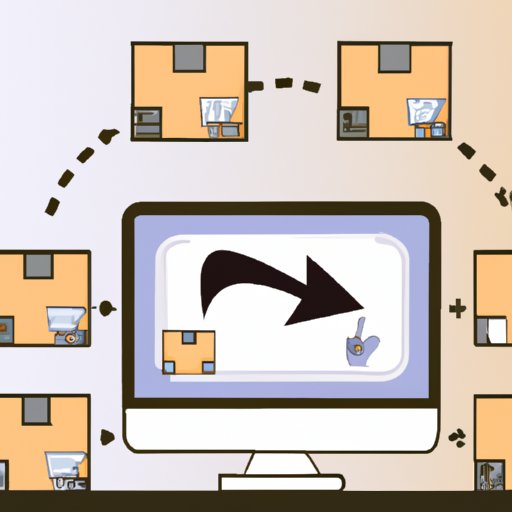Introduction
ShipStation is an all-in-one shipping solution designed to help eCommerce businesses save time, money, and effort when it comes to shipping. It provides an easy way for merchants to manage orders, print labels, and ship products from any device or web browser. It also offers a range of features and integrations that makes the entire shipping process easier and more efficient.
What is ShipStation?
ShipStation is an online shipping platform that enables users to manage their order fulfillment process from one central location. It integrates with multiple carriers, giving merchants the ability to compare rates, print labels, and track packages in real-time. The platform allows users to quickly and easily process orders, print labels, and generate shipping manifests. It also offers a range of features such as automated order processing, bulk order editing, branded tracking pages, and more.

Overview of Benefits and Features
ShipStation offers several key benefits and features that make it a great choice for eCommerce businesses. These include:
- Automated order processing – ShipStation automatically pulls orders from multiple sales channels and stores them in one place, making it easy to manage all your orders from one dashboard.
- Real-time tracking – Track packages from start to finish with live updates from multiple carriers.
- Flexible shipping rules – Set up custom shipping rules to automate tasks and ensure orders are shipped according to your preferences.
- Integrated label printing – Print labels for multiple carriers from one single location.
- Multi-channel fulfillment – Fulfill orders across multiple sales channels from one single location.
- Inventory management – Keep track of your inventory levels and receive notifications when stock is low.
- Analytics and reporting – Gain insights into your business performance with detailed analytics and reporting.
Step by Step Guide to Using ShipStation
Now let’s look at how to use ShipStation to streamline your eCommerce shipping.
Signing Up
The first step is to sign up for a ShipStation account. You can do this by visiting the ShipStation website and filling out the registration form. Once you’ve created your account, you’ll be taken to the Dashboard where you can start setting up your account.
Setting Up Shipping Rules
Once you’ve signed up, you can begin setting up your shipping rules. This will allow you to create rules that tell ShipStation how to handle different types of orders. For example, you can set up rules to automatically assign orders to specific carriers, print labels, and send out notifications when orders are shipped.
Configuring Your Store
Next, you’ll need to configure your store in ShipStation. This will allow you to integrate your store with ShipStation so that orders can be automatically imported into the system. You can connect your store to ShipStation using APIs, plugins, or CSV files.
Processing Orders
Once your store is connected, ShipStation will automatically pull in orders from your store and display them on the Dashboard. From here, you can select orders and start processing them. You can select which carrier to ship with, add special instructions, and print labels.
Printing Shipping Labels
Once you’ve selected the carrier and added any special instructions, you can print the shipping labels. You can also add additional services such as insurance or signature confirmation. Once printed, you can attach the labels to the packages and they’ll be ready to ship.
How ShipStation Streamlines eCommerce Shipping
ShipStation has several features that make it a great tool for streamlining the eCommerce shipping process. These include:
Automation of Processes
ShipStation automates many of the processes involved in shipping orders. This includes pulling orders from your store, assigning carriers, printing labels, and sending out notifications. This automation saves time and makes it easier to manage orders.
Integration with Carriers
ShipStation integrates with multiple carriers, making it easy to compare rates and track shipments in real-time. This gives merchants more control over the shipping process and helps them keep costs down.
Multi-Channel Fulfillment
ShipStation allows merchants to fulfill orders across multiple sales channels from one single location. This eliminates the need to manage orders from multiple locations and makes it easier to keep track of orders.

Understanding the Different Pricing Plans of ShipStation
ShipStation offers several different pricing plans, each with its own set of features and fees. Here’s a breakdown of the different plans:
Monthly Subscription Fees
ShipStation charges a monthly subscription fee depending on the plan you choose. The Basic plan costs $9 per month, the Plus plan costs $45 per month, and the Pro plan costs $69 per month. All plans come with unlimited orders and free USPS Priority Mail.
Per-Order Fees
ShipStation also charges a per-order fee for each order processed. This fee varies depending on the carrier and the plan you choose. For example, if you use UPS, the Basic plan charges $0.20 per order, the Plus plan charges $0.18 per order, and the Pro plan charges $0.16 per order.
Additional Fees
ShipStation also charges additional fees for certain services such as insurance, signature confirmation, and address validation. These fees vary depending on the service and the carrier.

Integrating ShipStation with Your Online Store
ShipStation can be integrated with most major shopping carts and marketplaces, allowing you to easily sync products and orders. Here’s how to get started:
Connecting with Shopping Carts
First, you’ll need to connect your store to ShipStation. This can be done by using APIs, plugins, or CSV files. Once connected, orders will be automatically imported into ShipStation and you can start processing them.
Tracking Inventory
ShipStation also allows you to keep track of your inventory levels. This makes it easier to ensure you have enough stock to fulfill orders. You can also receive notifications when stock is low.
Syncing Products and Orders
Finally, ShipStation can sync products and orders across multiple sales channels. This allows you to manage orders from one single location, saving you time and effort.
Conclusion
ShipStation is a powerful platform that helps streamline and automate your eCommerce shipping process. It offers a range of features and integrations that make it easy to manage orders, print labels, and ship products. With its flexible pricing plans and integrations, ShipStation can help you save time and money while streamlining your shipping process.
Key Takeaways
- ShipStation is an online shipping platform that enables users to manage their order fulfillment process from one central location.
- It offers a range of features and integrations that make it easy to manage orders, print labels, and ship products.
- ShipStation offers several different pricing plans, each with its own set of features and fees.
- It can be integrated with most major shopping carts and marketplaces, allowing you to easily sync products and orders.
(Note: Is this article not meeting your expectations? Do you have knowledge or insights to share? Unlock new opportunities and expand your reach by joining our authors team. Click Registration to join us and share your expertise with our readers.)
